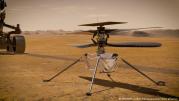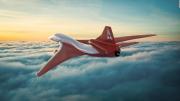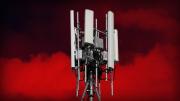Supersonic AS3 Plane: London to Newyork in around 2 hours
No supersonic aircraft has been built for passengers since Concorde was abolished. Now a new test aircraft is ready, which is four times faster than the speed of sound. With this plane, the journey from New York to London will take just two hours.
The plane which is twenty-one meters long, is a small but a huge leap in the history of aviation. For the first time in history, there is now a privately built supersonic aircraft. So far, the European Concorde (up to 2003), the Soviet Union's Topolov Tu-144 (up to 1999) and supersonic military jets have all been developed with the cooperation of governments and military budgets.
But this plane is different. The Denver-based company Boom Supersonic introduced the first purely privately produced supersonic jet in October 2020. This single-seat jet is currently called the XB-1BB Boom. This year, trials of the three-engine jet will begin in the desert in the US state of California.
Three and a half hours from John F. Kennedy to Heathrow Airport
The project aims to validate an aerodynamic concept and then mass-produce this supersonic jet, for at least 75 passengers. According to experts, commercial flights of such planes may start in the second half of this decade and their speed will be up to 2700 kilometers per hour, ie the journey using this supersonic plane from London to New York will be completed in three and a half hours.
The company claims that the fuel for these aircraft will be environment friendly and will emit very little carbon dioxide as possible. The aircraft uses technology that will reduce the noise. Airplanes that make a lot of noise at start-up are currently banned. But in the United States, NASA and the Aviation Authority are continuing successful research to reduce the noise of supersonic aircraft.
Flying faster than sound is a dream that has been seen for decades. In practice, this dream was first fulfilled by the manufacture of Concorde, but it still faces many challenges, such as the manufacture of the most suitable engines.
The tireless work of many institutions continues
Most likely, small supersonic jets will be developed first. For example, for business companies with a capacity of eight to fifteen people. Aion Supersonic has been working on it since 2002. So far, the company has not been able to bring a single supersonic jet to market, but recently the company introduced a model of the three-engine AS2 aircraft, which will be able to fly in the year 2024 and in the year 2026 it'll be able to take regular flights. However, the aircraft will be slower than Concorde.
"We have a technology roadmap for the next 50 years," said Mike Mansini, Arien's then chief strategy and finance officer in 2019. The first step towards the future of the fastest journey will be with AS2.
He said the next step would be to build a larger aircraft. "We will do all this keeping in mind the environmental requirements so that problems are minimized." Due to these problems, Concorde's capacity was also limited. It would be fair to expect the arrival of the first generation of new supersonic airlines in the 2030s. "
Future AS2-Business Jet von Aerion possible from New York to London in two hours
Earlier this month, just before Easter, Arion made an announcement. The company said it would make a big leap to the Supersonic AS3 by the end of this decade. The aircraft will have a seating capacity of 50 passengers and will be able to cover a distance of 13,000 km in a single flight. The speed of this supersonic plane will be 5000 kilometers per hour or possibly even higher. This will be the first time a commercial aircraft has reached the lower level of the 'hypersonic' range. Hypersonic begins with MacFive. Mac speed is a measure of how specific conditions are.
However, very little information about AS3 has come to light. The company has promised to release more details of the project over the next few years. The company says the purpose of its aircraft is to reach any corner of the world within three hours.
However, German researcher Bernd Leibhard is cautious. "In my opinion decades are left in the future of hypersonic," he says. Right now, supersonic speed is a very difficult task, and hypersonic speed would be a huge step beyond that. "







